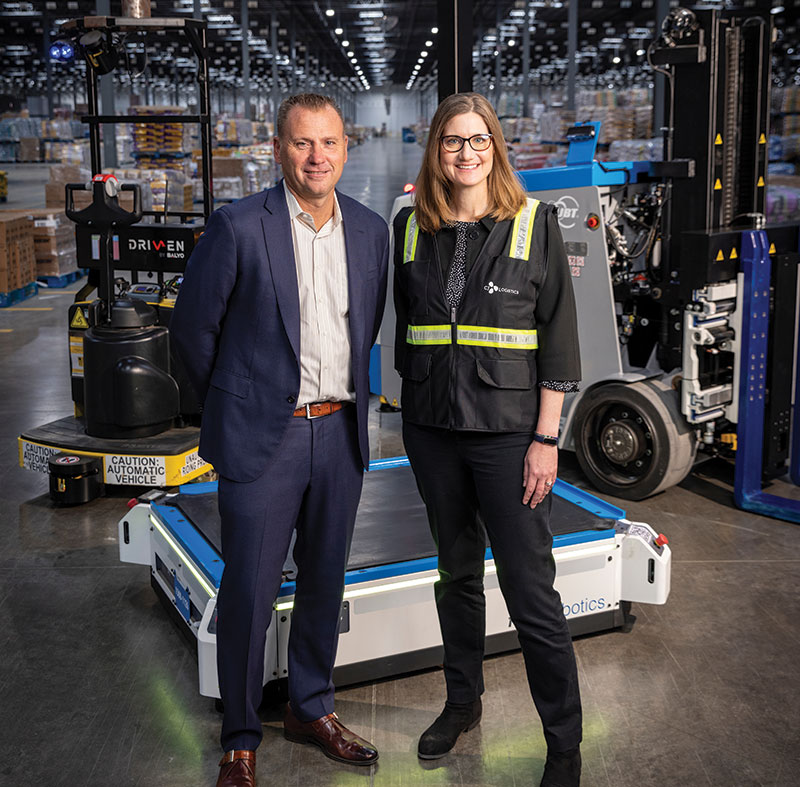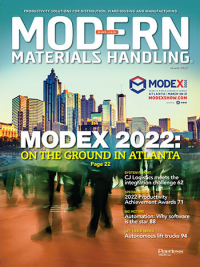CJ Logistics meets the integration challenge
CJ Logistics is integrating mobile robots, autonomous lift trucks and other technologies to improve its processes. The 3PL turned to an integration platform to bring it all together.
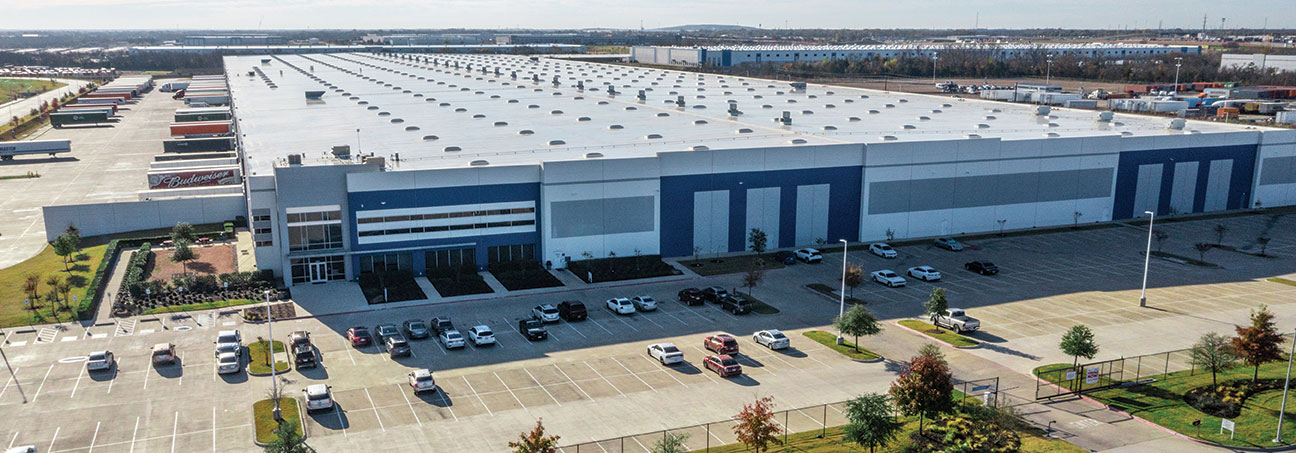
It might have 11 letters, but integration is often spoken by our industry as if it were a four-letter word. Sure, we have more software and automation tools than ever, but getting them to play nicely with each other is still a major challenge.
Too often, that challenge leads to islands of automation, whether intentional or not. What’s more, integration is often time consuming and expensive, requiring a significant amount of custom coding. The result is improved, but suboptimal operations that never realize the full potential of an integrated system optimized across all of the processes.
Integration was a hurdle to overcome for third-party logistics (3PL) provider CJ Logistics when it set out to add autonomous mobile robots, automated lift trucks, electronic pallet trucks, and voice and vision technologies at a 1.1-million-square-foot facility in Dallas. An important step was not only integrating those technologies together, but also with the facility’s warehouse management system (WMS) from Blue Yonder.
“This was a strategic initiative for our company,” says Laura Adams, vice president of technology, engineering systems and solutions (TES) for the global third-party services provider. “In this particular building, we wanted to deploy several technologies that CJ Logistics is using on a global basis. But, no single provider could provide it all, so we needed a partner that had industry knowledge, had experience building integration points and could integrate with our system.”
The solution was a unique Cloud-based integration platform from a supply chain startup. To make it work, SVT Robotics onboards the necessary integration points from the various solution providers onto its platform—as well as those from a host of other solution and software providers—and then enables a customer like CJ Logistics to integrate the solutions it needs to create its processes. And once a solution set is validated and deployed, it’s a permanent part of the 3PL provider’s toolbox and can be applied to other facilities and for other customers.
Leading with innovation
With headquarters in Seoul, Korea, and a heritage extending back 90 years, CJ Logistics was formed from the 2013 merger of CJ Korea Express, Korea’s largest logistics firm, with CJ GLS. Regularly ranked among the country’s most admired companies by the Korean Management Association Consulting, CJ Logistics is recognized as a forerunner of endeavor and innovation in the Korean logistics industry. Its portfolio spans customs clearance; ocean, air, inland transportation and final-mile delivery; climate-controlled warehousing; and warehousing and order fulfillment, including e-fulfillment.
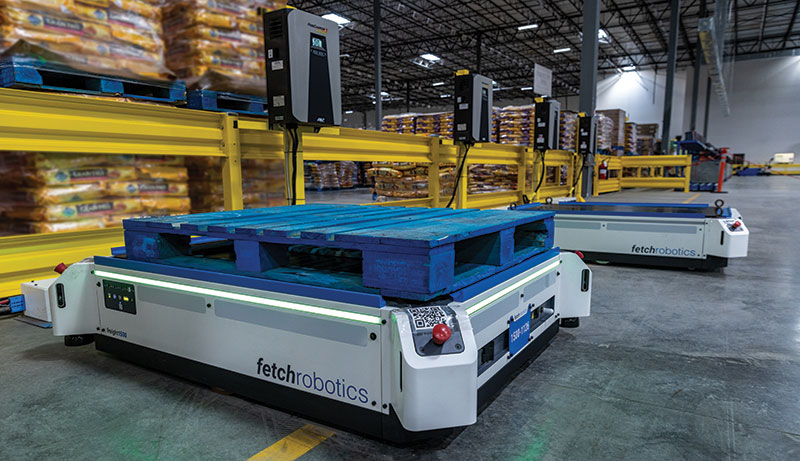
It has operated in the United States for nearly 50 years and strengthened its North American operations with the purchase of Des Plaines, Ill.-based DSC Logistics in 2018. Today, CJ Logistics operates in 155 cities across 40 countries with 80 locations in North America. It has a significant presence in regulated industries, such as food and beverage, health care and consumer packaged goods (CPG). Food and CPG products are distributed at the pallet and case level from the Dallas facility, which is dedicated to one customer.
The project at the Dallas facility reflects two trends driving the 3PL industry today. The first is a quest for innovation as a competitive differentiator, something that CJ Logistics considers a best practice; and the second is the requirement to continually deliver value to customers.
Those requirements have always been there, but they are now in a business environment that was already shifting before Covid, and now has the added complexity of doing those things while operating in a pandemic that has exacerbated existing issues such as the labor shortage and rising costs of energy, labor, transportation and materials.
“We have always been focused on creating customer value through the total cost of the system, transforming business processes, improving service, and driving growth and change,” says Kevin Coleman, co-CEO at CJ Logistics America. “Today, our customers are asking us how we can challenge the status quo to deal with the changes in consumer demand patterns.”
Part of that shift is a change in focus from handling at the lowest unit cost within a facility to a focus on the cost of the total end-to-end process. In that scenario, an increase in handling costs inside the four walls of a facility might result in a lower total end-to-end cost.
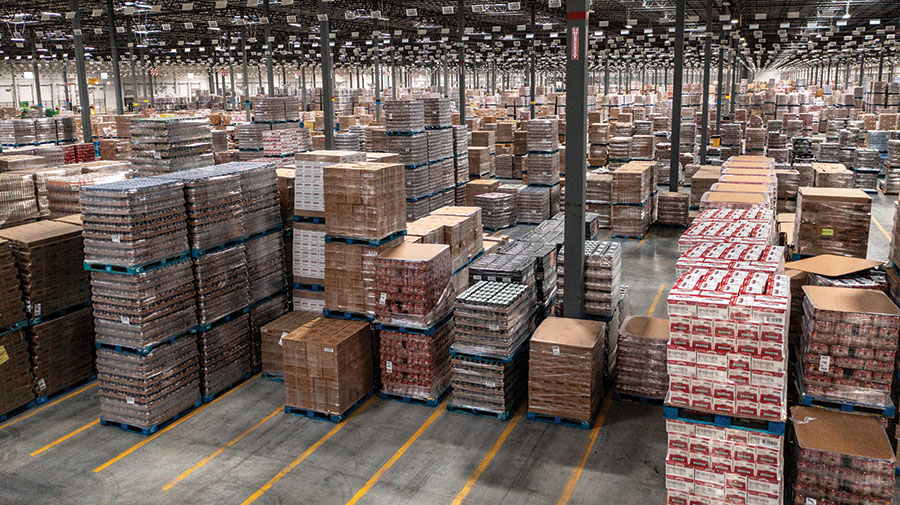
Adams adds that those changing consumer demand patterns are creating a faster-paced environment, at the same time as CJ Logistics’ customers’ businesses are becoming more complex, due to mergers, acquisitions and SKU proliferation. “Now, with Covid, we’re experiencing capacity constraints,” Adams says. “All of that means that the solution we provide today needs to be flexible enough to adapt to what we might have to do in the future.”
All of those factors taken together, including the rising operating and labor costs combined with labor and resource constraints, is leading 3PLs like CJ Logistics to implement higher levels of automation than in the past.
“The technology space is evolving fast,” says Coleman. “In the past, the solutions were not portable or flexible, and today they are. On top of that, the pandemic is forcing all of us to look for ways to eliminate touches in the supply chain to create a safer work environment, and to make up for the fact that there just aren’t enough people to get orders out the door without automation.”
He adds, “the conversations now are that we have to do something different to service our customers.” In that sense, CJ Logistics is leading with innovation.
How we deliver value
With all of that as backdrop, the Dallas distribution center was a greenfield facility that opened near the end of 2019. The project involving SVT Robotics got underway early the following year, before the pandemic. Adams described it as “a strategic initiative” on behalf of a customer that wanted to see an increase in throughput.
At the time, the Dallas labor market was tight but manageable. So, the focus initially wasn’t so much on how to make up for a lack of labor. Instead, “the question was what can we do differently to generate labor efficiencies the right way and reduce travel distances?” Adams says. “There wasn’t a specific timeline to complete the project. Rather, we wanted to make sure we had a cost-effective solution.”
The goal then was to introduce automation to reduce the human element in non-value-added processes, such as pallet movement, and reduce the touches and travel time required for value-added processes such as case picking.
The tool kit for achieving those goals would come from the technologies CJ Logistics was already deploying on a global basis, including autonomous mobile robots (AMRs), automated lift trucks (AFLs) and electronic pallet trucks (EPT). Initially, that included voice- and light-directed picking, which were later augmented by vision-directed picking.
The road map looked like this:
AMRs designed for case handling would be used to reduce the amount of walking required of associates in case picking; an associate could remain in a zone while the AMR traveled from pick location to pick location.
AFLs would be used to pick up pallets in receiving and then automatically put them away in a storage location, as well as conduct automated pallet pick and deliver pallets to outbound staging. Ultimately, the AFLs would also be used for automated trailer loading and unloading.
EPTs would be used for non-value-added pallet movement. The EPTs are essentially autonomous pallet jacks that can move four pallets at time. Since they can only lift a pallet 6 inches off the floor, they are only used for transport. An example of a task might be moving a pallet from one business unit to another where it’s combined with other pallets for an order.
Voice and put-to-light were initially used interchangeably to direct case picking. Eventually, CJ Logistics went to a multi-modal solution that combines vision-directed picking with voice that’s used to capture lot information, which can be more easily inputted by voice.
“Once we developed a roadmap for what we wanted to do, we realized we had to find a solution to integrate these new technologies with our WMS,” Adams says.
But the goal wasn’t just to integrate with Blue Yonder. CJ Logistics wanted to develop a solution platform that was WMS agnostic, one on which technologies could be added or removed in the future as requirements change, or rolled out to other facilities with similar requirements.
“We needed to connect to Blue Yonder today, but our ultimate vision is to develop a robotics hub that can integrate with whatever WMS our customer wants us to use,” says Coleman. “For instance, a manufacturing company may want to use EWM from SAP. Being flexible is key to our strategy.”
Later in 2020, CJ Logistics was introduced to SVT Robotics by Blue Yonder, its WMS provider.
There’s a platform for that
The concept behind SVT Robotics bears some explanation. The company was founded by two former Swisslog executives who experienced first-hand the frustration of trying to integrate disparate technologies from a number of different vendors when they worked on an automation project in a new automotive assembly plant.
Left to systems integrators and solution providers, integration took months, required tremendous amounts of new coding with an end result that still wasn’t always optimal or successful. Their inspiration came from the electric grid. Regardless of what’s involved in making a computer, monitor and keyboard work, from a power standpoint when they’re plugged into electrical sockets, they all work. Why couldn’t the same concept work for integration on a plug-and-play Cloud-based platform? Done right, it would allow for the rapid deployment of a solution, or the rapid reconfiguration of a solution when requirements change, without custom coding. SVT Robotics calls it a Softbot Platform.
“On behalf of the market, we prebuild softbot connectors to leading technologies across the industry, including automatic guided vehicles, AMRs, conveyors, sorters, WMS and e-commerce shipping platforms, to name a few,” says T.J. Fanning, SVT’s vice president of growth. “By prebuilding the connectors, we can integrate multiple robotic and automation systems, build solution sets, validate them and then have them in CJ Logistics’ toolbox so they can be redeployed to other customers.”
The platform also handles orchestration decisions so that, for instance, a task for pallet movement on the dock can be assigned to an EPT rather than an AFL if it just involves travel without putaway. In another example, lot capture was not a requirement for every product, so using the platform, CJ Logistics could determine which zones needed it to be available.
According to Fanning and Adams, the software stack was installed and ready for deployment once the hardware was procured and delivered to the facility. Then, each of the individual solutions was enabled. For instance, in case picking, CJ Logistics rolled out AMRs from Fetch.
Then over about six weeks, they rolled out smart-glass vision technology, voice and finally put-to-light. Those were done in sequence. The other solutions were similarly implemented as the hardware arrived, including the EPTs and AFLs.
One of the pivots along the way was a new requirement to capture lot information. To make that possible, CJ Logistics worked with SVT to create a new multi-modal case picking process. An associate receives information about the pick location, SKU and quantity through smart glasses and then confirms the lot information with voice. Thanks to the pre-built connectors, it was relatively simple to integrate the technologies for that process.
The platform also allowed CJ Logistics to manage how tasks were rolled out to its operators, and to switch back and forth between existing and new processes during the changeover as required. “If we wanted to use part of the week for training and then concentrate on throughput with the existing processes the rest of the week, we could change which process we were using through the platform,” Adams explains. While SVT Robotics engineers were on-site, within two to three months they no longer had to be there on all shifts.
A new tool
CJ Logistics has been working with the new technologies and integration platform for about a year. According to Adams and Coleman, the most important benefit is that it expands the tool kit, enabling CJ Logistics to quickly adjust to its customers’ changing requirements with new technologies as they emerge.
“There is no one solution that will fit every customer and every facility,” says Adams. “Once we have a connector on the platform, we can bring together the best components for each customer profile.
Is vision the next picking technology?
CJ Logistics
Square Footage: 1.1 million square feet
Products Handled: This is a dedicated facility that distributes food and CPG products at the pallet and case levels to retail, club stores and specialty stores on a regional basis.
SKUs: 4,000
Throughput: 38 to 40 million cases annually
People/Shifts: 3 shifts per day, 5 days per week
The concept of vision-directed technology using some type of smart glass has been floating around warehouse operations for a number of years. The first application was likely the use of vision in maintenance and repair operations (MRO), enabling technicians to share what they were looking at with a more senior level technician, a supervisor or even to overlay an image of what a part should look like on top of the part they were going to repair.
That was followed, albeit slowly, by expansion of the technology into picking operations. Vision technologies were on display at ProMat in 2017, and Modern featured a pilot vision-guided pick-to-cart process at a DHL facility in the March 2018 issue (“Next Gen supply chain at DHL”).
According to Laura Adams, vice president of technology, engineering, systems and solutions for CJ Logistics, vision-guided picking might be ready to move out of the emerging technology category.
CJ Logistics implemented the technology as part of a multi-modal case picking solution at a 1.1-million-square-foot facility in Dallas. CJ Logistics is combining vision with voice in a process where associates receive location, SKU and quantity information on a vision headset from Ox Technology, and then use voice to capture lot information. “The technology has come a long way,” says Adams. “In the right application, we find it better than voice.”
Rolling out any new technology can be challenging, and taking on something as different as vision layers on another level of complexity. Adams says the process at CJ Logistics began with a selection of a few associates who were willing to experiment with the technology, and then to work with them on the process.
For instance, some vision systems overlay a virtual image on a physical image by incorporating virtual colored squares that identify a put location on a cart or an autonomous mobile robot (AMR). After completing the pick, the associate stares at the cart or AMR and sees a virtual representation of where the pick should be stored.
“We made the decision that it was more complex from a user experience,” says Adams.
The employees who have used the technology have embraced it. “They like the concept that we’re trying to augment what they do,” says Adams, “and with younger workers, the more technology we can provide the better. It’s been a positive.”
System suppliers
- Cloud-based Software Integration Platform: SVT Robotics
- WMS: Blue Yonder
- Autonomous Mobile Robots: Fetch
- Autonomous Fork Lifts: JBT
- Electronic Pallet Truck: HYG (Hyster Yale)
- Vision Picking Technology: Ox Technology

Article Topics
Mobile Robots News & Resources
Autonomous mobile robots (AMRs) on a mission K.Hartwall and its Australian distribution partner, Retailquip, join forces Neura Robotics and OMRON forge alliance to offer “Cognitive” robots to manufacturers AMR provider LexxPluss opens demo space in Indiana Lane Automotive modernizes fulfillment operation with Exotec Skypod system Data Capture: Bar coding’s new friends ABB acquires AI-based autonomous navigation technology provider Sevensense More Mobile RobotsLatest in Materials Handling
Beckhoff USA opens new office in Austin, Texas Manhattan Associates selects TeamViewer as partner for warehouse vision picking ASME Foundation wins grant for technical workforce development The (Not So) Secret Weapons: How Key Cabinets and Asset Management Lockers Are Changing Supply Chain Operations MODEX C-Suite Interview with Harold Vanasse: The perfect blend of automation and sustainability Consultant and industry leader John M. Hill passes on at age 86 Registration open for Pack Expo International 2024 More Materials HandlingAbout the Author
Subscribe to Materials Handling Magazine

Find out what the world's most innovative companies are doing to improve productivity in their plants and distribution centers.
Start your FREE subscription today.
April 2024 Modern Materials Handling

Latest Resources


